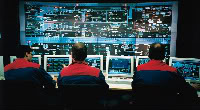Optimizing Renewable Power Sources


Let’s explore what all this means exactly. Suppose you’re responsible for power generation in a certain region – anything from the scope of the Western United States to a small remote village – and that you can have multiple sources for this power. Suppose, for instance, that you’d like to make use of wind turbines whenever possible, but you need diesel generators as a supplement. Exactly what happens when the wind slows down? Or, consider an even more urgent question: what happens when it blows like stink?
In the US, where renewables are a regrettably small percentage of our total electrical power mix, it’s really not a huge issue. Coal provides 48% – 49% of our power, and those plants run 24-hours per day turning out power with extreme consistency – albeit at considerable expense to the environment. But where renewables are a relatively large percentage, e.g., Europe – or when they’re in the process of growing, which most of us hope to see here in the US, it’s a huge issue.
This is a game of optimization, i.e., how does one deliver the cleanest, least expensive, most reliable blend of power onto the grid? In the course of my conversation with Peter, I got an immediate sense for how difficult this process of optimization is, due to the many variables at play:
– You want to favor renewables over fossil fuels wherever possible, but you don’t want an unacceptably high risk of brownouts.
– Dirty power sources are only dirty when you use them; there is nothing wrong with coal or oil if it’s used as a back-up. However, if you might later need power from a coal or nuclear plant you can only back its output down a limited amount. If you turn off a coal plant, it takes about 24 hours to bring it back online. Nuclear is even less flexible.
– For the greatest reliability, you don’t want all your eggs in one basket; you want to distribute power generation methods across different technologies.
– You want to minimize cost. There is plenty of clean energy out there if you’re willing to spend enough to get it. (I laughed out loud in this part of the conversation, as I had just published a blog post on far-offshore wind farms, which would be ideal, if it weren’t for the cost.)
– Utilities don’t want to decommission plants that are working fine.
As suggested above, this is a much bigger issue internationally. Up until the last decade, most of Peter’s attention was on small, remote areas in developing counties. But when the world decided that money was too tight to put too much attention on impoverished people in poor countries, the area of focus became the Australia, Alaska, and the Caribbean. Island communities are perfect for renewables as their power is entirely generated by importing oil – not at all ideal, insofar as it’s expensive and its dependence puts the country’s security at risk. They can also get to high renewable contributions quickly with just a couple of projects.
“Wow, 30 years.” I mused. “That’s an impressive period of time. You must have seen some heavy-duty changes. Can you take me through some of that?” I asked.
“When I got into this, it was mostly anti-nuclear activists. And by the way, I’m sad to report that nuclear isn’t dead. When you hear politicians say ‘We need to keep all our options on the table,’ that’s usually code-speak for ‘let’s resurrect nuclear power.’”
“Then what happened? Did the activists just go away?”
“No, but then in 1990s they were joined by ‘the tinkerers’ and the ‘mad scientists,’ followed by ‘the arrogant millionaires’ from their dot-com IPOs looking for the next big thing.”
“So now we have the makings of a trillion-dollar industry, which is going to need all kinds of skills and experience.”
“Yes,” Peter replied. “As you put it on your website, ‘It’s business.’ Now we have pragmatic people – lots of them – working to make viable businesses. HOMER Energy’s user base is a community of the innovators, working hard with their sleeves rolled up, looking at all the different ways to get this done.”
35,000 people all over the world use Homer Energy software to optimize the delivery of renewable power — and about a thousand new users join the family each month. What a fantastic contribution to the world of sustainability. On behalf of us all, Peter, thank you.

Reblogged this on Energy post.